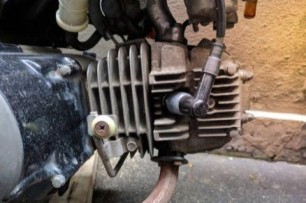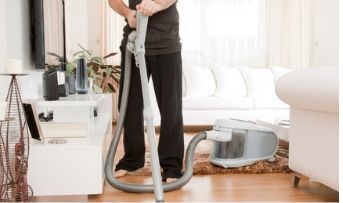General Insurance Blogs, Articles & Updates by - Magma HDI
Have us call you
- RENEW YOUR POLICY
- BUY NEW POLICY

Best tips to clean the car carpets to make them shine as new
Understanding how to keep your car shiny is not only a matter of display but also a necessity to sustain your car's value. Certain parts of the car are exposed to dust and need to be cleaned regularly. The mats in your vehicle are the single most mistreated part and are often overlooked during a carwash. They are continuously battered by dirt, filth, sand, twigs, and stones brought in by your shoes. Not to mention how food and beverage spills create an excess mess on the carpet.
So, here are some of the best tips to keep your car carpets as good as new:
1. Take out all of the waste from the vehicle, including empty bottles, cans, wrappings, and pieces of paper. Gather it all up and chuck it away. Also, organise other personal things and either keep them in the glove box or remove them from the vehicle while you clean the carpets.
2. Now use a strong vacuum cleaner to clean the carpets thoroughly. Apply a stiff rug brush to scrape the fibres. Doing this will remove the dust and small bits that have been trapped between the fibres.
3. Examine the carpet for spots and areas that need further care before shampooing it. Prepare a spray bottle with hot water, vinegar, and a few drops of cleaning solution or laundry soap. Let it absorb for a moment before respraying and scrubbing it with a brush.
4. To get rid of a stubborn liquid stain, use soda and salt. Immediately after spilling something, put soda and salt on it and let it sit for a while. Then scrub it off using a paper towel or a cloth.
5. The best way to clean stains is to act quickly. To remove as much excess as possible, place a piece of paper tissue on the area. Then, sprinkle cold or sparkling water over the stain to dilute it and prevent it from hardening. After, wipe the area with additional paper towels or a cloth to absorb the liquid.
6. Finally, wash off your carpet. Then use a steam cleaner to dry it. The fabrics dry only with the pressure of hot compressed steam, which enters the material and blasts away any remaining trash.
7. Take measures to protect the fabric. Carpet and upholstery protectors come into play here. These chemicals coat the material with a flexible hydrophobic coating. To achieve complete coverage, spray the product evenly over the surface of the mat, then allow it to settle before applying another layer.
When it comes to caring for your vehicle, don't leave anything to chance. Owners diligently schedule regular maintenance of their car and take it in for expert treatment at the first hint of a problem. For those occasions when you decide to treat your vehicle yourself or in between expert treatments, the tips mentioned above will surely help keep your car carpets secured from getting dirty.
Similarly, opt for online car insurance to secure your car from the threat of physical damages during mishaps. Invest in good car insurance to aid you in paying the mechanic's required fees for repairs and servicing.
Click HERE to get online car insurance.
Disclaimer: The information provided above is for illustrative purposes only. To get more details, please refer to policy wordings and prospectus before purchasing a policy.

Here's why reading is a good habit
In a digital world where everything happens at the touch of a button, books emerge as one of the oldest and most potent resources humankind has invented. They hold great knowledge and can feel you connected. Books also help people deal with anxiety or depression by making them feel more engaged.
Whether you are an avid reader or would like to become one, here are some of the benefits that make reading an excellent habit!
1. Stimulates the brain:
Reading and mental stimulation go hand-in-hand. When you are reading something, you are focused on one task, which keeps your brain constantly active. As per various researches, the mentally stimulated brain can help prevent several diseases, including Dementia and Alzheimer.
2. Improves vocabulary:
Reading improves vocabulary, especially when you read newspapers, articles, and books every day. The more you read, the more you get exposed to new words and enhance your vocabulary. You'll be surprised at how easily you'll start inculcating the words you've read in your day-to-day life.
3. Releases stress:
Who doesn't have days when they are highly stressed? Reading your favourite books will take you to your personal leisure space, whether you are worried about work or your personal life. As you focus on reading, you will forget about the stress and uplift your mood. So, how about grabbing your favourite book to release your tension when you feel down?
4. Improves memory skills:
When reading a fictional book, you will have to remember many details about the characters to grasp where the story is going. All this directly impacts your brain's memory and plays a vital role in strengthening your short-term memory.
5. Enhances knowledge:
Since childhood, older adults have always told us that books are one of the tremendous seas of knowledge. There is no such thing as "enough" knowledge. There is always something new to know and learn about with plenty of world history and new inventions each day.
6. Keeps you open to new perspectives:
No two brains are alike. When you spend your time reading articles online, you will know how different people think, their thoughts, reactions to situations, how they view life, and much more. When you read the rights and wrongs, you will welcome new perspectives and see life differently.
7. Helps in improving writing skills:
Reading often helps you to analyse each writer's different writing styles better. As mentioned previously, it enhances your vocabulary; you will be able to write better as you open up to new words, thoughts, and more. Regular reading trains your brain to analyse information efficiently and polishes your writing skills!
8. Improves concentration:
Humans are prone to multitasking which disturbs concentration power. Spending 15-20 minutes a day reading a book or article will help you increase concentration and focus better. This is because when you are reading, you give all your attention to one thing.
After reading the points mentioned above, it is no surprise that reading provides too many benefits for you to miss out on! Isn't it amazing how reading can do wonders for your life and promote your well-being?
While reading provides various benefits, it is also vital to take care of your health by engaging yourself in different activities. Another healthy habit that can positively impact your life is having online health insurance to eliminate the financial burden in case of unexpected incidents. Nevertheless, we hope you always stay fit and healthy!
Click HERE to buy online health insurance.
Disclaimer: The information provided above is for illustrative purposes only. To get more details, please refer to policy wordings and prospectus before purchasing a policy.

Common mistakes while learning to swim and ways to fix them
With the summer season right around the corner, it is time to take out your swimming trunks and goggles. For the past two years, the pools have been closed owing to the pandemic. But the numbers have been under control in recent past months, making way for pools to open up again with specified capacity. Although it's best to take refuge inside your homes in well air-conditioned rooms, taking a swim in your nearby pool is an option that most of us might consider. Over the years, we have seen an increasing number of people enrolling in swimming classes and actively making efforts to learn various styles of swimming. This article will prove helpful if you are new to swimming or want to polish your skills.
Today, we will look at a few common mistakes that people make while learning to swim and the ways to fix them.
1. Holding your breath:
Beginners commonly believe that the most crucial thing before diving into the pool is to hold your breath. Instead of helping themselves, they refrain from breathing to maneuver the waters.
A better solution to address this is to practice holding your breath on land before attempting it in water. This will help you control your breath more systematically and in a timed manner. Try inhaling and slowly exhaling while keeping a constant momentum.
2. Head too high:
One of the most common swimming mistakes is holding your head above water for breathing. It sounds surprising. How else are you supposed to breathe? When you lift your head, it causes your hip to drop down, slowing you down and increasing your resistance. Keep your head down, and when you need to breathe, you can do so from the side of the arm when it is out of the water's surface. Rotate your head to the side so that your mouth gets air to breathe.
3. Keeping your hips straight:
In the above passage, we discussed how the lowering of the hip could affect you negatively. Sometimes instead of rotating them, people use the upper body and the legs to move through the water.
Swimmers fail to realise that the most power comes from the hip. Utilising your core muscles and rotating your trunk will help you push through the water without tiring out your legs.
4. Pointing your toes:
Having straight pointy toes while swimming tightens up your muscles and makes it difficult for you to propel yourself in water. Swimmers should have flexible and loose ankles in water to maintain pace and direction. Practice curling your toes outside the pool. Try picking coins on the floor using your toes. Transfer them from one bowl to another to familiarise your toes with curling and being able to control them. This is the best way to train your toes before diving into the pool.
These are a few common mistakes swimmers make when starting their journey. Swimming can seem like a daunting activity, but it is sure to be one of the most enjoyable experiences with time. It is, however, advised to practice swimming under the guidance of certified coaches in well maintained and clean swimming facilities to avoid any health complications.
Another mistake that you should avoid is neglecting the importance of health insurance. Health insurance will act as your safety net in case of any injuries or accidents you might face while training.
A good tip would be to look for affordable health insurance plans, secure your finances against health ailments, and contribute to a healthy lifestyle.
Click HERE to know more about affordable health insurance plans.
Disclaimer: The information provided above is for illustrative purposes only. To get more details, please refer to policy wordings and prospectus before purchasing a policy.

The 2022-23 economic survey indicates greater insurance penetration. Know more
The Ministry of Finance and Corporate Affairs of the Government of India presented the Economic Survey 2022-23 along with the budget on the 1st of February, 2023, in the parliament. It projects optimistic growth in the Indian economy in the current year because of the high private consumption, increased investment and production activity, higher capital expenditure, and strong revival of the service sector post the dull phase of Covid-19.
The insurance sector in India has also grown at a rapid pace, especially after the pandemic. The 2022-23 economic survey indicates greater insurance penetration. Let us know more about it.
Insurance penetration and its pace:
Insurance penetration is the total insurance premium ratio to a country's gross domestic product in a particular year. It is a globally accepted indicator of the growth of the insurance sector of a country.
Insurance penetration in India was a meagre 2.7% in the year 2000. The 2022-23 economic survey reveals that it rose to 4.2% in 2020 and 3.2% in 2021. It is also slightly higher than the global average, pointing to the efficient functioning of the sector in India.
While greater awareness is one of the factors that has led to such positive figures, tech advancement in insurance sectors and the facilities to buy insurance policy online are also to be credited.
Insurance density:
Insurance density is the ratio of the total premium collected to the country's total population. In other words, it is the per capita premium of a country. The insurance density in India was $11.5 in the year 2001. According to the 2022-23 economic survey, it has risen sharply to $91 by 2021.
The density for life insurance was US$69, while that for non-life insurance was US$22 in 2021. The survey also indicates that savings-linked life insurance products are the highest selling in India.
Reasons for increased penetration.
1. Digitisation of the insurance market:
Many surveys state that the digitisation of the insurance sector in recent years has fuelled its growth in India. Artificial Intelligence (AI), machine learning, and the implementation of advanced technology in the insurance sector have increased efficiency and enhanced synergy.
App-based policy sales and renewal, online premium payment, and speedy claim settlement processes have helped the sector to grow and penetrate rapidly. The permit to conduct video-based know-your-customer (KYC) documentation and rewarding low-risk behaviour has also helped boost demand and penetration.
2. Increase in FDI limits:
The survey also states that the increase in FDI limits to 74% in companies that provide insurance cover has helped bring foreign capital into the Indian insurance sector. 100% FDI has been allowed for insurance intermediaries like brokerages. This has helped the industry to snowball.
3. Post-Covid awareness:
According to the surveys, the non-life insurance sector will likely witness increased penetration due to post-covid awareness of health insurance. People have realised the importance of health insurance, due to which its demand is witnessing a steady rise.
The government also provides strong insurance support by promoting the mass health program "Ayushman Bharat." It annually provides a health cover of Rs. 5 lakhs per beneficiary family. Pradhan Mantri Suraksha Bima Yojana is another innovative non-life insurance product operational in India. It provides risk coverage up to Rs. 2 lakhs and has contributed to greater insurance penetration.
The 2022-23 economic survey has correctly stated that insurance penetration is at a record high in India. While people are becoming increasingly aware of the importance of insurance post the Covid-19 pandemic in India, the increase in digitisation and efficiency in the issue and claim settlement process has further led to greater insurance penetration.
Online insurance has been a blessing for the insurance industry and immensely contributes to increasing the demand for insurance products and boosting growth. Choose to buy insurance policy online to make the process easier and hassle-free.
Click HERE to buy insurance policy online.
Disclaimer: The information provided above is for illustrative purposes only. To get more details, please refer to policy wordings and prospectus before purchasing a policy.

2-stroke or 4-stroke bike: Which is better for you
A wide range of motorcycles is available in the market today. Every model differs in several ways. So, when purchasing a bike, it is crucial to know its specific functions like its engine, mileage, and fuel economy.
Overall, a durable engine design is crucial for a good motorcycle. Even though two-wheeler engines and their mechanisms have transformed drastically over the years, the two primary gasoline-powered combustion engine designs are — 2-stroke engine and 4-stroke engine. And while you may secure your two-wheeler by purchasing reliable bike insurance, it is essential to know which kind of engine is best suited for you.
If you have done your research, you may be familiar with these two types of motorcycle engines. Although, if you're new to the field, here are some points to help you understand!
Let's understand more about a stroke engine:
To understand the functions of the engines, you must know about their combustion cycle. The engine's combustion cycle or revolution involves the piston's continuous up and down movement.
A stroke is the piston's movement from one position closest to the valve to another, which is furthest away from it. At the end of every stroke, a spark causes the gas and air mixture to ignite, which invariably helps the bike move forward.
So, what are the significant differences between a 2-stroke and a 4-stroke engine?
You may notice absolutely no difference between a 2-stroke and a 4-stroke engine on the first look. In line with its function, 2-stroke and 4-stroke bikes follow the equal gas-powered internal-combustion standards. However, the main distinction lies within the number of strokes the two engines require to produce power. A 4-stroke motorcycle needs four piston strokes to complete the combustion cycle, while a 2-stroke motorcycle does it in two.
In a 4-stroke engine, the piston performs two strokes during a single cycle, completed by a return stroke. The power gets produced after every four strokes of the piston. The highlight of this kind of engine is that it does not need to pre-mix any fluids like oil and fuel.
Similarly, in a 2-stroke engine, the combustion cycle requires just one piston compression stroke and is completed by an explosion to generate power. The power gets produced when the piston achieves two strokes. In opposition to a 4-stroke engine, a 2-stroke engine requires the oil to be pre-mixed with the fuel.
Which engine is better?
4-stroke engines are definitely the better pick. Here are a few reasons why:
1. They offer more efficient fuel consumption and controlled usage.
2. 4-stroke engines are more durable in the long term.
3. While the 2-stroke engine is more powerful, it is highly noisy and creates a loud buzzing sound that the 4-stroke one does not.
4. Above all, 4-stroke motorcycle engines are more eco-friendly. 2-stroke engines emit far more toxic emissions.
While noting all these advantages of a 4-stroke engine, you must also remember that maintaining 4-stroke two-wheelers can be more expensive. They have many intricate parts that require more intensive upkeep. Its modified efficiency requires more investment of funds from your end.
Hopefully, this article helps you understand the functions of each engine and specifically pick which type works better for you! Don't miss out on securing your motorcycle with robust bike insurance. You may visit several policy features online and purchase the one offering the best value-to-money.
Click HERE to buy the best bike insurance to protect your bike from mishaps.
Disclaimer: The information provided above is for illustrative purposes only. To get more details, please refer to policy wordings and prospectus before purchasing a policy.
A wide range of motorcycles is available in the market today. Every model differs in several ways. So, when purchasing a bike, it is crucial to know its specific functions like its engine, mileage, and fuel economy.
Overall, a durable engine design is crucial for a good motorcycle. Even though two-wheeler engines and their mechanisms have transformed drastically over the years, the two primary gasoline-powered combustion engine designs are — 2-stroke engine and 4-stroke engine. And while you may secure your two-wheeler by purchasing reliable bike insurance, it is essential to know which kind of engine is best suited for you.
If you have done your research, you may be familiar with these two types of motorcycle engines. Although, if you're new to the field, here are some points to help you understand!
Let's understand more about a stroke engine:
To understand the functions of the engines, you must know about their combustion cycle. The engine's combustion cycle or revolution involves the piston's continuous up and down movement.
A stroke is the piston's movement from one position closest to the valve to another, which is furthest away from it. At the end of every stroke, a spark causes the gas and air mixture to ignite, which invariably helps the bike move forward.
So, what are the significant differences between a 2-stroke and a 4-stroke engine?
You may notice absolutely no difference between a 2-stroke and a 4-stroke engine on the first look. In line with its function, 2-stroke and 4-stroke bikes follow the equal gas-powered internal-combustion standards. However, the main distinction lies within the number of strokes the two engines require to produce power. A 4-stroke motorcycle needs four piston strokes to complete the combustion cycle, while a 2-stroke motorcycle does it in two.
In a 4-stroke engine, the piston performs two strokes during a single cycle, completed by a return stroke. The power gets produced after every four strokes of the piston. The highlight of this kind of engine is that it does not need to pre-mix any fluids like oil and fuel.
Similarly, in a 2-stroke engine, the combustion cycle requires just one piston compression stroke and is completed by an explosion to generate power. The power gets produced when the piston achieves two strokes. In opposition to a 4-stroke engine, a 2-stroke engine requires the oil to be pre-mixed with the fuel.
Which engine is better?
4-stroke engines are definitely the better pick. Here are a few reasons why:
1. They offer more efficient fuel consumption and controlled usage.
2. 4-stroke engines are more durable in the long term.
3. While the 2-stroke engine is more powerful, it is highly noisy and creates a loud buzzing sound that the 4-stroke one does not.
4. Above all, 4-stroke motorcycle engines are more eco-friendly. 2-stroke engines emit far more toxic emissions.
While noting all these advantages of a 4-stroke engine, you must also remember that maintaining 4-stroke two-wheelers can be more expensive. They have many intricate parts that require more intensive upkeep. Its modified efficiency requires more investment of funds from your end.
Hopefully, this article helps you understand the functions of each engine and specifically pick which type works better for you! Don't miss out on securing your motorcycle with robust bike insurance. You may visit several policy features online and purchase the one offering the best value-to-money.
Click HERE to buy the best bike insurance to protect your bike from mishaps.
Disclaimer: The information provided above is for illustrative purposes only. To get more details, please refer to policy wordings and prospectus before purchasing a policy.

Here are a few reasons why your two-wheeler may be making strange noises
If you are a bike rider, you know that your bike needs to be regularly serviced to ensure a smooth and safe ride. Regular maintenance and check-up can go a long way for your two-wheeler. But, while you can grease and tighten the loose parts at home, it is better to leave the work for the experts. Today, we will look at the weird noises your two-wheeler makes and how you can identify the source of the problem.
This article will help you make an informed decision as to when to take your bike to the mechanic and when you can fix it yourself.
1. Clicking sounds:
You might have heard a periodic click from your two-wheeler on many different occasions. Although it can be a complex process to locate the exact source of the sound, you might be able to find it eventually with the help of a mechanic.
A mechanic's gadgets can be useful tools to help you find the source. A small gap, loose fittings, or a hole caused due to rusting can all be reasons for the clicking sounds.
2. Gurgling sounds:
Gurgling sounds arise when there is a problem with the cooling system. Any drop in the level of the coolant is indicative of an issue. For example, the pump cannot circulate the coolant properly if there is an air gap, and it starts to boil if it cannot move away from hot areas. This could result in the gurgle.
3. Ticking sounds:
If your bike makes a ticking sound when it reaches a particular speed, it usually indicates some damage in the valve clearance. Immediately get it inspected by a mechanic. Loose valves can affect the performance of your vehicle.
4. Whirring sounds:
Whirring sounds are invariably caused due to the drive chain. Chains generally make sounds. But if you hear anything out of the ordinary, it's time you get them checked. Cleaning your chain and examining loose rollers and stretches can help you resolve the problem.
5. Knocking sounds:
Knocking sounds are directly connected to the engine. Worn-out shells and collapsed bearings can hinder your engine's performance and be catastrophic. If you hear them while driving, you should immediately park the vehicle to safety and inspect the problem. It is also recommended to call a mechanic to fix the issue.
6. Whining sounds:
Whining sounds are clear indicators of gearbox issues. Gears work in pairs, and a problem in either reflects on the other.
7. Clattering sounds:
Clattering sounds could be indicators of issues with the chain or tensioner. Since chains undergo wear and tear over time, it leads to fatigue in the tensioner. This is not as dangerous as knocking sounds, but it can affect the bike's performance.
8. Popping sounds:
Checking the exhaust pipes for gaps or gas leakage should be the first step when you hear popping sounds.
These are the few sounds that you might have heard from a two-wheeler. After the preliminary examination, it is best to take your vehicle to a mechanic. They will be able to provide you with solutions for the same.
Sometimes you might need to change parts of your bike if the damage is severe. This can be expensive and burn a hole through your pockets. But, having your two-wheeler covered under insurance can do wonders for you. A good 2 wheeler insurance acts as a shield against such unprecedented expenses and offers several benefits that can be advantageous in case of damages.
Click HERE to look at 2 wheeler insurance options.
Disclaimer: The information provided above is for illustrative purposes only. To get more details, please refer to policy wordings and prospectus before purchasing a policy.

Spring cleaning is beneficial for your house and your health too
Most people love to clean their houses and redecorate them to give them a brand-new look. Often, professional deep cleaning is required to address those areas and corners throughout the house you overlook daily. However, it is recommended that they do so before the beginning of spring. While experts have documented the pros and cons of summer and winter cleaning, spring cleaning has no negative implications.
Not only does a round of decluttering make your house look spik and span, but it also does wonders for your physical and mental health and overall well-being! Especially when you are living with the elderly, ensuring a clean and safe indoor environment becomes more important.
Before diving into the benefits of the activity and getting started on deep cleaning your home, consider purchasing health insurance in India for parents and other family members. Health insurance in India for parents protects them from the risk of mishaps or developing any allergies by creating a safety net that shares the financial burden of hospitalisation.
With that out of the way, here are some of the benefits spring-cleaning offers.
1. Keep your mind and body physically active:
Only a few people enjoy going to the gym or a strenuous workout. However, carrying boxes of old goods and scrubbing the walls and the floor can be a real workout. Keeping your body and mind active results in a healthy heart and a happy mind. Moreover, cleaning is one of the best ways to burn some of the calories you gain during the holiday season. Plug your headphones in and play your jam and get cleaning!
2. Reduces the chance of injury:
A messy home increases the risk of injury for everyone, irrespective of age or gender. Spring cleaning gives you the time to throw out extra junk and replace old and weak items with new and stronger ones. It also allows you to notice any loose wire or floorboards that can cause severe injuries.
3. Protects the immune system:
While seasonal allergies can cause daily discomfort, mould, dust, and pet dander cause many medical problems. Therefore, deep spring cleaning helps eliminate pests and prevent respiratory problems. Dusting the furniture, windows, and other hard-to-reach places and covering them with a rug or cloth minimises the chances of dust accumulation. Deep vacuuming of carpets, curtains, and floors also prevents infections and pest problems.
Besides these, cleaning the kitchen and bathroom allows you to redecorate the place and understand the need for some particular cleaning products. Remember to avoid the overuse of sponges and dishcloths, as they get filled with bacteria over time.
4. Improves mood and focus:
A clean and fresh house improves your mood and clears your mental space. Cleaning your home is also a great way to relieve stress and anxiety, thus allowing you to focus on other aspects of your life. Clear and calm mental health leads to positivity and better productivity.
5. Prevents bugs and rodents:
Bugs and rodents love a dirty and messy home. Therefore, proper spring cleaning helps you avoid the growth and spread of bacteria and diseases caused by unwanted pests. Regularly sanitise the garbage bags below the kitchen sinks and cabinets and the area around the fridge to prevent bugs and rodents.
Cleaning your house may seem tiring and stressful, but once you start, you'll realise how much you need a clean and proper space and the therapeutic joy it offers. It also allows you to bond with your family over the seasonal cleaning. Before you start, ensure you buy health insurance in India for parents and all your dependents to protect yourself from medical emergencies.
Click HERE to buy health insurance in India for parents.
Disclaimer: The information provided above is for illustrative purposes only. To get more details, please refer to policy wordings and prospectus before purchasing a policy.

Follow these eight handy driving tips while travelling on highways
Road trips are something that all travel enthusiasts look forward to. They allow you to explore more than just your destination. From families to working professionals, road trips are perfect for every individual who wants a short and quick escape from the daily hustle of life.
While you enjoy most of the time driving on the highways with fast-paced cars passing along, there are certain things to keep in mind while navigating your way through the roads safely.
This article will look at eight handy driving tips while travelling on highways.
1. Speed control:
As opposed to city roads, on the highway, you are expected to drive faster than usual, owing to the multiple lanes and the light traffic situation. However, it is best to stick to the speed indicated by the signs on the road.
2. Lane change:
Switching lanes is one of the most overlooked driving practices. It is significantly more important on highways as most vehicles travel at higher-than-average speeds. When you change lanes, remember to turn on the car indicators to the traffic behind to signal them.
3. Analysing the distance:
While on the highway, ensure sufficient distance between your vehicle and others. Doing this gives you enough time to slow down and avoid a collision in case the driver in front brakes suddenly.
Stick to the “three-second rule”. Look for a point of reference and check the time you take to get that point after your preceding car passes it. The time taken should be at least three seconds, if not more.
4. Night driving:
Proper visibility is essential when it comes to driving at night. Keep the windshield clean and ensure that all the lights are working. The headlight should not be aimed too high because it will cause discomfort to others on the road. Try avoiding late-night trips. Instead, start early in the morning so that you manage to reach your destination during the daylight hours.
5. Breakdown:
In case of a breakdown, slow down gradually and move to either side of the highway. Turn on the hazard lights and place the hazard triangle about 10 feet behind the car to warn others. Call assistance after examining the damage. It is advisable to have contact details of highway assistance handy while taking road trips.
6. Take regular breaks:
Continuous driving for hours can be exhausting for the drivers. It is advisable to take frequent halts or refreshment breaks to relax your body and prepare to resume your journey. You can either take a quick nap or have some warm tea or coffee.
7. Servicing:
Before going on a long trip, it is recommended to take your car to the service centre. Facing issues while driving on the highway can be troublesome. Hence servicing and checkups should be a must before long trips.
8. Paperwork:
Carrying legitimate paperwork during highway journeys is essential. Make it a point to have your licence, PUC, and car insurance papers. Check the validity of all these documents to avoid getting fined and ensure that you face no legal troubles while on the road.
These are some of the top tips to keep in mind when taking a road trip. Navigating through the highway can be challenging at times. Hence, it is best to have a car insurance cover to safeguard you. With so many options to choose from, you might want to go through the new car insurance rates and choose the one that suits your needs the best.
Click HERE to know more about new car insurance rates.
Disclaimer: The information provided above is for illustrative purposes only. To get more details, please refer to policy wordings and prospectus before purchasing a policy.


